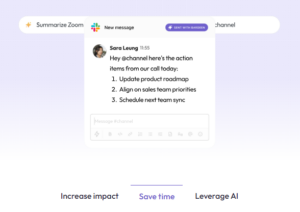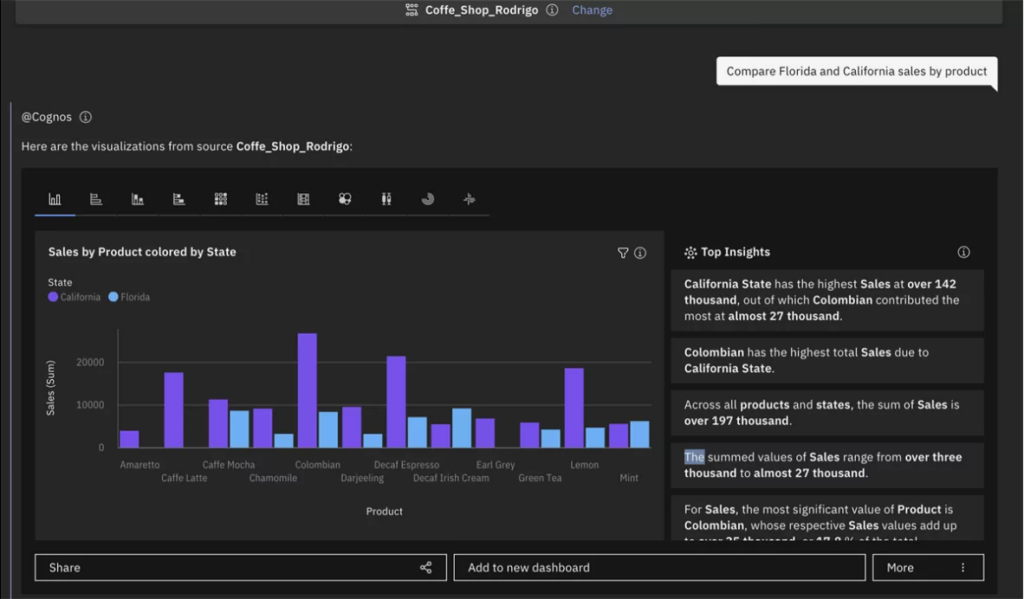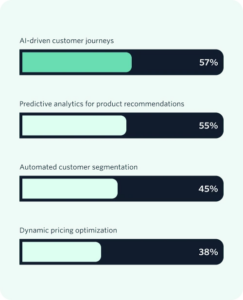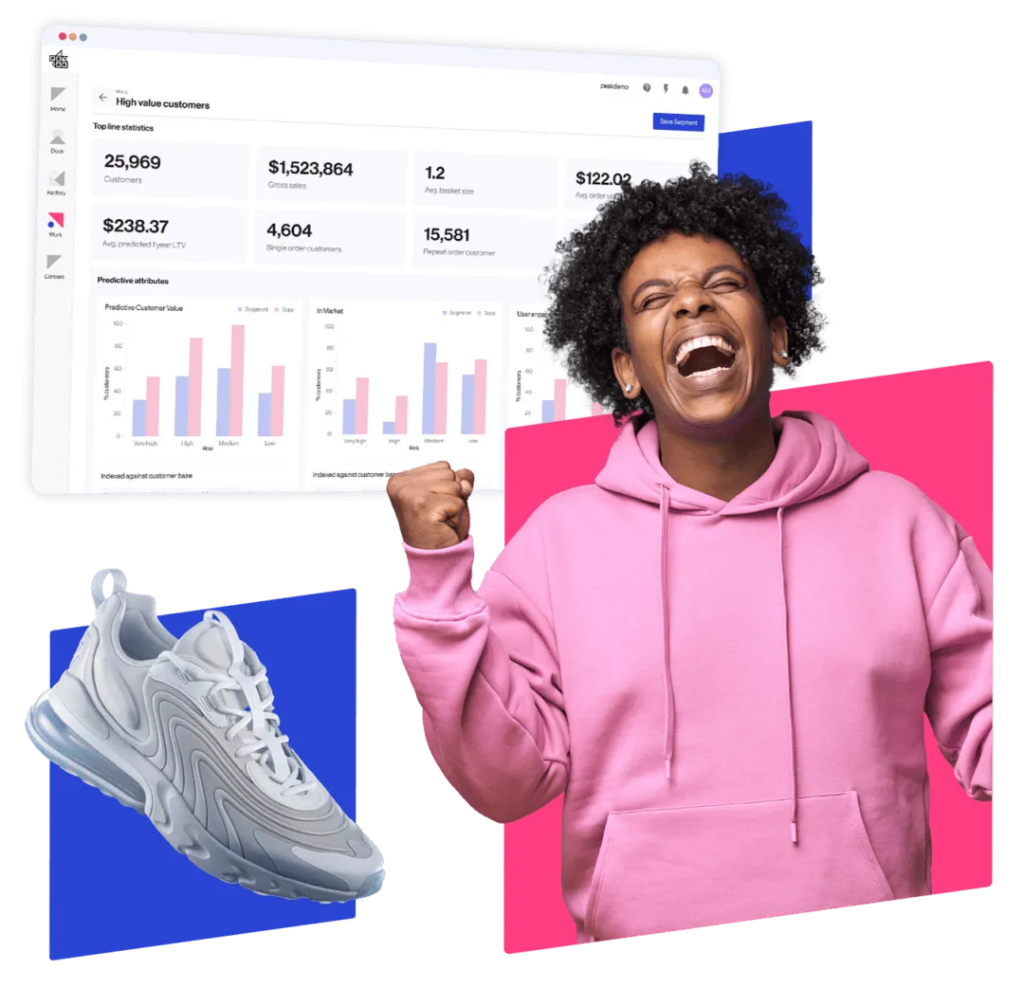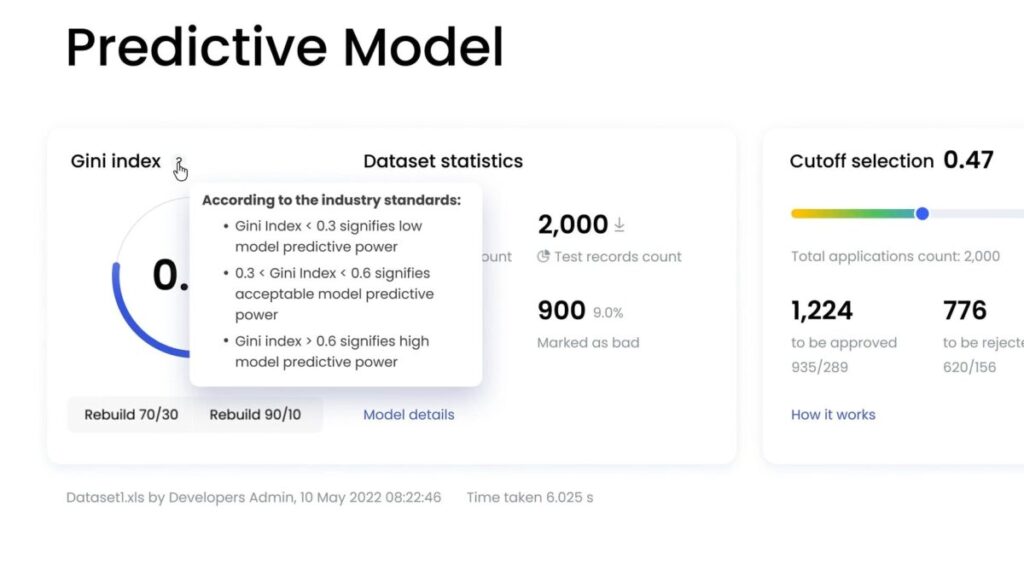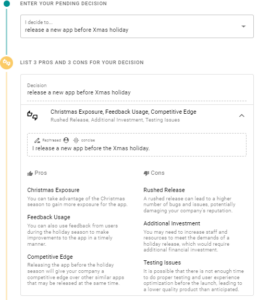In our Artificial Intelligence (AI) Marketing Benchmark Report, we found that over 61% of marketers have already used AI in their strategies, and 71% believe that AI can outperform humans. Although content production is among the primary use cases of AI, marketing analytics isn't far behind.
AI's analytical capabilities can be attributed to the speed and scale at which it can process data, providing insights that would take a human marketer hours or even days to uncover. For example, an AI tool can analyze an Excel sheet that you would take a whole day to decipher.
AI also facilitates predictive analytics, allowing marketers to anticipate future trends. Instead of merely relying on historical data to make decisions, AI can analyze real-time data and predict potential outcomes. In this guide, we examine the potential of AI marketing analytics and how marketers can use it to improve their decision-making processes.
A Guide to AI Marketing Analytics for Marketing Professionals
- A Guide to AI Marketing Analytics for Marketing Professionals
- What Is AI Marketing Analytics?
- What Is the Role of AI in Marketing Analytics?
- Which Problems of Traditional Marketing Analytics Does AI Solve?
- How Can Marketers Use AI to Improve Marketing Analytics?
- How to Implement AI Marketing Analytics In Your Business?
- Develop a Strategy
- Build a Data Infrastructure
- Select the Tools
- Hire the Right Talent
- Create a Data Privacy Compliance Plan
- Optimize Your Data Management
- Conclusion
- Frequently Asked Questions
What Is AI Marketing Analytics?
Before turning to the AI side of things, let's clarify what marketing analytics is. According to The Harvard Business School, marketing analytics refers to:
''The process of tracking and analyzing data from marketing efforts, often to reach a quantitative goal.''
All insights collected from marketing analytics enable businesses to make informed decisions about their marketing strategies. There are three types of data marketers collect to learn about their customers:
- First-party data: It is data collected directly from the customers. For example, the form you fill when you make a purchase is first-party data that you're providing to the company. Other examples of first-party data include customer feedback, website usage data, and email marketing interactions.
- Second-party data: Businesses acquire this data from trusted partners. For instance, a fashion brand may partner with a makeup brand to exchange data about their customers.
- Third-party data: The data here is obtained from external sources, such as social media platforms and public databases.
Even without AI, there are quite a few marketing analytics tools, Google Analytics being the most widely known. It connects with different marketing tools and gathers data from multiple sources, such as websites and email campaigns, to facilitate marketers in analyzing a bunch of metrics.

Top crucial metrics in Google Analytics
AI further enhances the potential of marketing analytics. Therefore, AI marketing analytics means using artificial intelligence techniques to analyze marketing data. For example, machine learning can help marketers understand consumer behavior patterns, while natural language processing can assist in analyzing customer feedback.
Why Is Marketing Analytics Important?
The importance of marketing analytics is such that the global marketing-related data market is worth over $50 billion. In a world where trends and preferences can change overnight, with simply a new video going viral or a new piece of information surfacing around a product or service, the need to capture and analyze customer data has become more important than ever.
Marketing analytics keeps brands informed about their target market and consumer behavior. Instead of merely shooting in the dark, companies can base their decisions on data. More importantly, marketing analytics show businesses if their strategies are working.
If so, organizations can continue using the same approach to maintain their success. If not, they can identify where they may be lacking and prevent monetary losses by switching up their marketing strategies.
What Is the Role of AI in Marketing Analytics?
In marketing analytics, AI does exactly what it does in other use cases: it speeds up the process and enhances efficiency. There are three main ways AI helps in marketing analytics.
Descriptive Analytics
Descriptive analytics means examining historical data to describe trends, relationships, and key patterns. It allows marketers to get insights from past events.
AI can assist in descriptive analytics by quickly sorting through large amounts of data to identify trends and patterns that may not be obvious to the human eye. More so, AI tools can create visualizations and reports that make it easier for marketers to understand and communicate the data.
Example: Your apparel brand wants to understand what type of marketing campaigns have been most successful in driving sales. AI can analyze all your past marketing campaigns and identify which strategies, platforms, audience segments, messaging types, and visuals have been most effective.
Predictive Analytics
In predictive analytics, AI uses historical data to make predictions about future events. For marketers, this means predicting consumer behavior.
''We are gathering more data than ever — but we need AI to transform it into predictive and actionable insights.''
That's exactly what marketers can do with AI tools and models.
Example: Your company wants to launch a new product and needs to create a pricing strategy. AI can analyze your historical sales data, competitor pricing, consumer demand patterns, and other factors to predict the optimal price point for maximum profitability.
Prescriptive Analytics
Prescriptive analytics goes beyond descriptive and predictive analytics by providing recommendations or actions based on the insights from the data. It can facilitate decision-making in multiple marketing aspects, such as pricing, product assortment, customer segmentation, and campaign optimization.
Example: Although you have a large email subscriber list, you struggle with low open and click-through rates. AI can analyze past email campaigns to prescribe personalized subject lines, content, visuals, and send times for each subscriber.
Which Problems of Traditional Marketing Analytics Does AI Solve?
As important as marketing analytics is, it's not always easy to extract valuable insights from data. Traditional analytics methods are often time-consuming, error-prone, and unable to handle the vast amount of data available today.
Here's how AI solves some of these problems.
Processing Large Quantities of Data
At present, the world creates 402.74 million terabytes of data every day. Of this, quite a bit is related to marketing, such as clicks, impressions, social media engagement, views, conversions, and so on.
Traditional tools can only do so much with this data and usually end up sampling a small portion for analysis due to technical limitations. On the other hand, AI can handle vast quantities of data and provide deeper, more accurate insights.
For example, AnswerRocket is an AI tool that lets you ''analyze data just by chatting.'' Its ChatGPT-like assistant, Max, converses with you about your data. For example, you can upload your social media data to AnswerRocket and ask Max questions like 'How did our Reels perform compared to our Stories?' You can then interactively drill down and explore the data in a chat-like format.
Data Correlation From Multiple Sources
Previously, correlating data from disparate sources was challenging, meaning that many comparisons were faulty and irrelevant. But AI can correlate data from multiple sources in seconds, revealing hidden patterns that may not have been apparent before.
For example, without AI, you might mistakenly assume that your latest social media marketing campaign resulted in sales due to its attractive visuals. But with AI, you could uncover that it was the timing and messaging of your campaign that made all the difference.
Bardeen.ai is a valuable tool that helps marketers in this regard. It integrates multiple data sources like LinkedIn, HubSpot, and Google Sheets to collect data. You can then set up customized automation, including data filtering, merging, and correlation.
Suppose you have a LinkedIn lead generation campaign, and you're trying to figure out which messaging resonates with your audience the most. You can connect your LinkedIn data with Bardeen and set up an automation to correlate it with your HubSpot data. In a matter of seconds, you'll have insights into which messaging resulted in the most conversions.
Removing Data Silos
Traditionally, different teams in the marketing department would use different tools for their tasks, resulting in data silos. Each team would have only a limited understanding of how their efforts are performing and lack insights into the bigger picture.
AI can help bridge this gap. Modern AI tools allow for seamless integration and unification of data from various sources, breaking down silos and providing a holistic view.
IBM Cognos Analytics is a prime example of such a tool. Marketers can use it to connect data from various sources like social media, web analytics, and CRM systems in one place.
You can then ask a question, and AI will give you the required insights. It also creates beautiful data visualizations to help you understand the data better.
Facilitating Multi-User Collaboration
In many marketing use cases, different stakeholders and team members need to collaborate for optimal results. For example, data engineers and data scientists work together to build predictive models, while marketers and sales teams collaborate to fine-tune lead generation strategies.
However, with traditional software, this lack of collaboration resulted in businesses selecting the wrong data and attribution models for their needs. Also, the data was often unreliable and of poor quality because organizations lacked systems and processes to filter out irrelevant and misleading data.
With AI, this has changed. AI-powered tools enable collaboration between cross-functional teams, improving the accuracy and reliability of data-driven decisions. For example, Qlik Sense lets businesses combine all data sources into a single view.
A common security and governance framework ensures all users have access to the same data. The tool also combines:
''real-time data pipeline with action-oriented capabilities that provide in-the-moment insights and drive immediate action.''
It further offers AI-generated insight suggestions automatically for faster decision-making.
How Can Marketers Use AI to Improve Marketing Analytics?
Marketers can use AI in multiple ways to assist with the gathering, filtering, and analysis of data. They can further use this data to forecast sales, enhance purchase experiences for customers, create customer personas, improve decision-making, and segment potential customers efficiently.
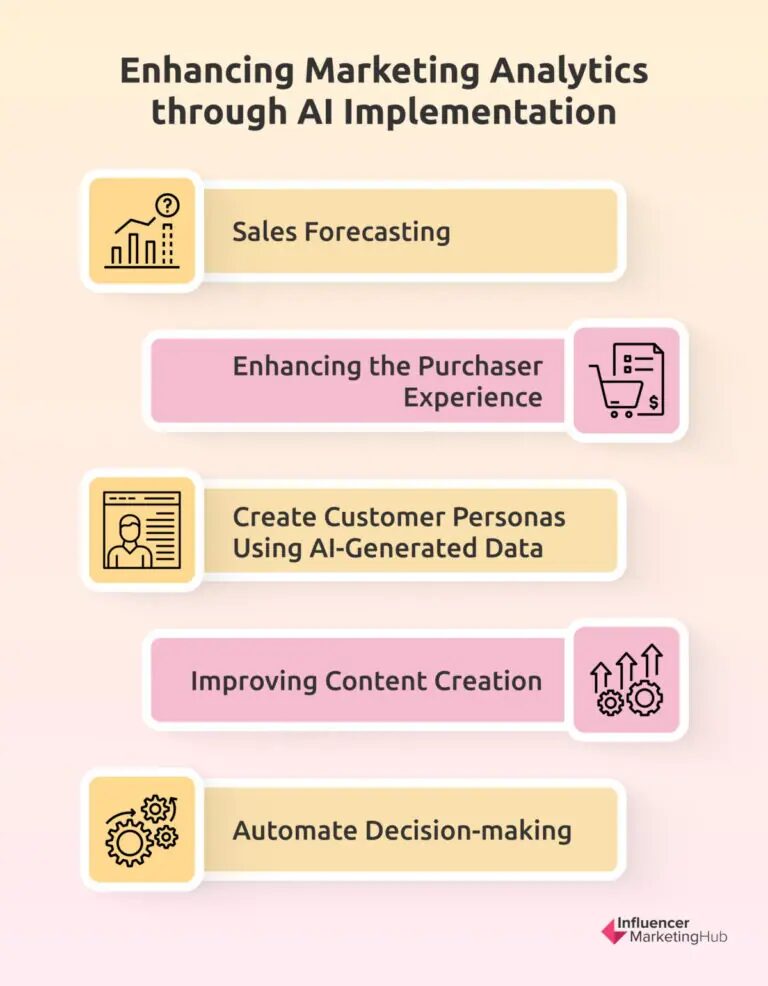
Improvement in marketing analytics with AI
Sales Forecasting
Many businesses use CRM software to record details about their leads, customers, and sales, and this can rapidly accumulate a wealth of data.
Traditionally, much of this would have just sat there, being severely underutilized, but artificial intelligence software can now make use of this data, making increasingly accurate forecasts. For example, AI can predict things like:
- Which customers are mostly likely to make a purchase
- How often these purchases are made
- The average value of such sales
The advantage of more accurate forecasting is that you can better control your inventory stocks, ensuring you neither overstock nor understock most goods.
Tool Suggestion: Weflow is an advanced pipeline management and forecasting tool that lets you manage and review your sales pipeline with more than 50 signals. You can also get AI insights from this tool since it lets you compare calls against quotas and provide AI predictions for your pipeline.
Enhancing the Purchaser Experience
Segment's State of Personalization Report found that 57% of business leaders believe AI-driven customer journeys will be impactful in the future, while 55% said that predictive analytics for product recommendations will be important.
As personalization becomes more critical, AI can analyze customer data to create more personalized and relevant experiences. By using analytics, such as customer demographics, browsing habits, and purchase history, brands can create marketing messages that are individualized to enhance buyer experience and increase customer engagement and loyalty.
Tool Suggestion: Insider is an AI personalization tool that connects data across channels and automates cross-channel journeys. Its dedicated AI tool, called Sirius, personalizes all touch points in customer journeys, such as individualized content and product recommendations.
Create Customer Personas Using AI-Generated Data
Customer personas are fictional profiles you create representing specific types of target customers. They may not be real people; however, they simulate your actual (and preferred potential) customers. You can create different customer personas for each type of customer with whom you wish to focus your marketing activities.
Suppose your company offers a SaaS tool for project management. Your customer personas are:
- Project managers working in large organizations
- Freelance project managers
- Small business owners
- Large enterprises
Each of these personas has different needs and pain points. For example, freelancers will need cheaper, smaller plans, while large enterprises will go for your most expensive and comprehensive plan.
With an AI tool, you can segment your customers into these categories. The tool can further provide suggestions for reaching each persona and marketing to them.
Tool Suggestion: Peak AI is an AI-powered customer segmentation tool that lets marketers personalize customer experiences. It helps marketers view the purchasing propensity of their customers and assess their churn risk. The AI-driven segments also link to your existing CRM or social media systems to make integration easier.
Improving Content Creation
In many ways, the most obvious use for marketing analytics (AI or not) is to improve the quality of the marketing content you create. As marketing guru Neil Patel declares:
“Every campaign, online and off, can be tracked and measured using an ever-growing number of analytic tools.”
Data and analytics should guide your decisions about your content marketing campaigns and strategies. They can answer your questions about how successful your current marketing efforts are, particularly concerning the types of content that your audiences relate to compared to the types not relevant to your specific audience.
In a HubSpot survey, 78% of business professionals said that AI helps them pull insights from data that they wouldn't have found otherwise. Also, 77% of business leaders said that it helps them understand their customers better.
Tool Suggestion: Clearscope is an AI-powered content optimization AI tool that helps you discover keywords and conduct competitive analysis for target keywords. It also optimizes content using SERP competitor outlines and suggested terms. You can use it to create more data-driven and customer-centric content that engages your audience effectively.
Automate Decision-Making
AI marketing analytics tools can also help you automate decision-making processes. For example, you can use AI predictive analysis to decide on the best channels to invest your marketing budget in for maximum ROI.
You now have access to marketing tools that can make decisions on your behalf while reducing risks and improving the accuracy of your campaigns. For example, Gini Machine is a decision-making software that reduces your risks by up to 45% and reveals the true value of your data insights.
It can create a predictive model from your historical data to make data-driven decisions, such as predicting the success of your content or email marketing campaigns. On top of that, the tool gauges the influence of each variable, predicting which adjustments to your marketing strategy will have the biggest impact on ROI.
Tool Suggestion: Rationale is an AI-driven decision-maker that uses four decision-analysis techniques to give you results in just 10 seconds. With techniques like contextual analysis and causal chain analysis, the tool shows you up to three levels of outcomes. It's also multilingual, benefitting marketers across the globe.
How to Implement AI Marketing Analytics In Your Business?
Now that you're familiar with the use cases and working mechanisms of AI marketing analytics, here's a step-by-step guide on how to implement it in your business.
Develop a Strategy
You should have a clear AI marketing analytics implementation strategy before you go on to the deployment part. Set the objectives for your strategy. Some suggestions include:
- Improving customer segmentation and targeting
- Increasing customer engagement
- Optimizing marketing campaigns
- Enhancing customer experience
- Identifying new market opportunities
- Optimizing content
- Taking automated decisions
You can always have more than one objective. Just make sure they go with your business goals.
Build a Data Infrastructure
Data is the foundation of marketing analytics, so it makes sense to start with building a solid data infrastructure. You can either do it in-house or outsource it to a third-party provider.
Select the Tools
We've mentioned some AI marketing analytics tools in the previous section, but you should also do research on your own. Select the tools based on the objectives of your strategy.
For example, if you want to improve customer segmentation and targeting, look for tools that offer predictive modeling and advanced segmentation capabilities. If your goal is to enhance customer experience, opt for AI customer sentiment analysis tools.
Hire the Right Talent
You can go about this in two ways. One, reskill your existing marketing team to work with AI tools. Two, hire new talent with expertise in data analysis and AI technologies.
Either way, you’ll have to ensure continuous education. The World Economic Forum reports that 1.1 billion jobs will be radically transformed by technology in the next 10 years, mandating the need for 680 million to receive improved education and skills. So, you must invest in the education and development of your team to keep up with the rapidly evolving AI landscape.
Create a Data Privacy Compliance Plan
Since you need loads of data for AI marketing automation to work, you must develop a data privacy compliance plan. It should adhere to the relevant laws and regulations of your industry. Train your team on how to handle customer data and keep it secure, too.
Optimize Your Data Management
After setting your AI marketing automation processes and tools in action, keep a close eye on data management. Continue what works and improve what doesn't.
Conclusion
Thanks to AI, we now have tools with analytics capabilities far beyond any human. AI helps you connect and bring together disparate data, automate data models for scale, and shrink optimization cycles. It automates insights and provides you with accurate answers to most of the questions you may have about your marketing performance.
In the guide above, we've discussed the use cases of AI marketing automation and discussed a number of tools that can help you achieve your marketing objectives. We've also touched on the process of implementing AI marketing automation practices in your business.
Not only can you use AI to examine your marketing analytics, but you can also examine the performance of your competitors. The comparison can help you make decisions that keep you at the top of your game.
Frequently Asked Questions
What is AI marketing analytics?
AI marketing analytics refers to the use of AI tools and technologies to analyze large amounts of data and provide insights into marketing performance. It helps businesses make data-driven decisions and optimize their marketing strategies.
How does AI improve marketing analytics?
AI improves marketing analytics by automating data processing, predicting future trends, personalizing customer interactions, and automating insights. This allows marketers to make more informed decisions and optimize their campaigns for better results.
What are the benefits of using AI in marketing analytics?
AI in marketing analytics offers numerous benefits, such as improved campaign performance, a better understanding of customer behaviors, efficient data management, and cost-effectiveness.
What are the challenges associated with AI in marketing analytics?
Some common challenges marketers face in AI marketing analytics are data privacy issues, integration with existing systems, data quality and bias, high cost of implementation, and skills gap.


